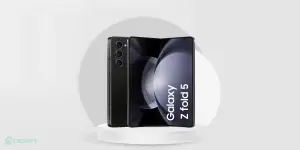Despite Qualcomm being a leader in the SoCs race, there are several other companies that have ventured out to create their own chipsets for their smartphones. Some of these including Apple, Exynos, Kirin, and MediaTek.
As mentioned, Samsung uses its Exynos chipsets to power the flagships and Apple uses their A-series SoCs, Huawei and Honor use their Kirin SoCs and most other brands use Qualcomm for their SoC needs.
All the new flagship smartphones of 2020 will be using the latest flagship SoCs from the above options, Samsung will be using either the Snapdragon 865 or Exynos 990 in their S20 and Note series based on region.
Apple will be using the A14 chip in the upcoming smartphones while Huawei will stick to their Kirin 990 for their computing needs. With all these chipsets in this market, we can now compare them and stack them against each other to see how well they fare in the real market.
Manufacturing Process and Performance
Except for the Exynos 990 chipset, all the other SoCs use different versions of TSMC’s 7nm manufacturing process. There are three versions of the 7nm manufacturing process, the N7 is their first-generation 7nm fabrication, N7P is the second generation.
Both these generations are DUB based, however, N7+ is based on a completely different EUV based 7nm fabrication process.
The Apple A13 and the Qualcomm Snapdragon 865 SoCs use N7P while Kirin uses N7+, as mentioned before Exynos 990 uses a separate EUV process.
By most measures, N7P has about 7% performance improvement at the same power consumption levels or 10% lower power consumption for the same output.
N7+ can have a 10% higher performance at the same power consumption or 15% lower power consumption at the same output.
The Apple A13 and Snapdragon 865 are made with the same 7NP fabrication and Kirin 990 is the only one to adopt the better N7+ fabrication, Exynos, on the other hand, uses their in-house 7nm EUV fabrication.
| Apple A13 | Snapdragon 865 | Kirin 990 5G | Exynos 990 |
| 6-Core CPU | 8-core CPU | 8-core CPU | 8-core CPU |
| 2x Lightning Cores @ 2.65GHz | 1x Cortex-A77 Core @ 2.84GHz | 2x Cortex-A76 Cores@ 2.86GHz | 2x Exynos M5 Cores |
| 4xThunder Cores @ 1.8GHz | 3x Cortex-A77 Cores@ 2.42GHz | 2x Cortex-A76 Cores@ 2.36GHz | 2x Cortex-A76 Cores |
| 4x Cortex-A55 Cores @ 1.8GHz | 4x Cortex-A55 Cores@ 1.95GHz | 4x Cortex-A55 Cores |
As seen in the table above, Apple is the only one using a 6-core CPU and they’ve done this before by choosing a 6-core CPU over an 8-core option.
It consists of two performance cores and four efficiency cores in the Apple A13. Most of the SoCs follow this by having four efficiency cores with similar frequencies.
While the number of performance cores is surely less in the Apple A13, they have been manufactured based on the in-house Apple Architecture which is expected to be better than ARM’s Cortex A76 or A77.
While the Kirin has the highest clock speed of the above options, it is based on the A76 architecture, Snapdragon uses one A77. Samsung uses two Mongoose 5 based cores for high performance and uses another two A76 based cores from ARM.
The Samsung Galaxy S20 has come in two variants, one with the Qualcomm Snapdragon 865 while the other with their in-house Exynos 990 chipset.
A single core and multi-core tests on Geekbench 4.4 and Apple A13 return the best results at 5,471. The Exynos 990 stood second at 4,665 for the single-core test.
The Snapdragon 865 scored 4,301 and the Kirin 990 scored 3,841. With the Multicore test, Apple still ended up first on the list but the overall results were closer to each other.
The Apple A13 scored 13,755 while the Snapdragon 865 came in second at 13,344. The Exynos 990 scored 12,002 and the Kirin 990 scored 12,636.
GPU Performance
The Apple A13 was announced with massive claims of being the world’s most powerful GPU at the time of launch, the latest Qualcomm Snapdragon 865 and the Exynos 990 were not yet announced then.
Qualcomm has pushed the limits with its new Snapdragon 865 chipset and has provided a better GPU than the previous offerings. The Exynos 990 uses G77-MP11 GPU which is much better than the G76 seen on the Kirin 990.
The Apple A13 uses a custom 4-core GPU with unknown clock speeds. The Snapdragon 865 uses Adreno 650 clocked at 587MHz, the Exynos uses the Mali G77-MP11 GPU at unknown clock frequency while the Kirin 990 uses the Mali G76-Mp16 at 700Mhz.
In the benchmark tests, the Exynos 990 came in highest at 8,393 while the Snapdragon 865 came in second with 8,288. The Kirin scored 5,133 points while the Apple A13 lagged behind at 5,059 points.
While the scores on the Exynos 990 and the Snapdragon 865 are understandable, the fact that Kirin 990 ended up with a higher score than the Apple A13 did seem to be a surprise.
Camera and Optics
The Qualcomm Snapdragon 865 seems to be doing well in this segment as it has the highest supported resolution by the ISP. However, higher megapixels don’t directly translate to better image quality and processing.
iPhones still use 12MP sensors which we believe is the sweet spot for smartphone photography. The high-resolution camera sensors are just a marketing strategy in most cases to bring the attention of the customers.
Apple uses a custom-designed Image Processor and supports 4K HDR recording at 60FPS or 1080P recording at 240FPS. The Exynos 990 uses an unnamed ISP and supports up to 108MP sensor, it also supports 8K HDR recording at 30FPS and 4K HDR at 120FPS. It also supports 720P recording at up to 960FPS.
The Snapdragon 865 uses the Spectra 490 ISP and supports up to 200MP resolution. Even the Snapdragon 865 supports 8K HDR at 30FPS and 4K HDR at 120FPS, the 720P recording is supported at up to 960FPS.
The Kirin 990 has the ISP 5.0 and supports 4K recording at 60FPS, 960FPS at 1080P and a whooping 7680FPS at 720p.
Also Read: Dual Camera Vs Single Camera Smartphones: Which Is Better?
All the chipsets stand well in this department, the Apple A13 chip does wonders coupled with the iOS specific software algorithm. The Snapdragon 865 and Kirin 990 are also very capable and we’ve seen Pixel and Huawei devices do well with previous chipsets.
However, Huawei devices tend to lack in the video department and there is scope for improvement there. The Exynos 990 also does an amazing job with the image processing and supports 8K HDR encoded videos similar to the Snapdragon 865.
In this department, yet another factor is the manufacturer optimization and how well they utilize the hardware on the SoC. All the SoCs talked about above have significantly good ISP and can deliver good images as output.
Connectivity
With the exception of the Apple A13, all the other three SoCs are 5G capable. While the Exynos 990 and the Snapdragon 865 use a standalone 5G modem, the Kirin 990 5G comes with integrated 5G modem.
Snapdragon uses the Qualcomm X55 5G Modem, Exynos uses the Exynos 5123 5G Modem. The Apple A13 uses an Intel XMM 7660 LTE Model with support for 1.6Gbps download on 4G and 225Mbps upload on 4G.
Snapdragon 865 uses the X55 5G model that supports the fastest speeds. The supported download speed on the Snapdragon 865 is up to 7.5Gbps and upload speed of 3Gbps. Exynos stands second with the Exynos 5123 5G Model, the modem supports up to 7.35Gbps download and unknown upload speeds.
The Kirin 990 uses the Balong 5G model and only supports up to 2.3Gbps download or 1.25Gbps upload. Although 5G connectivity in India is still a far fetch, the Snapdragon 865 supports the highest 5G speeds followed closely by the Exynos 990.
Also Read: Best 5G Smartphones That You Can Buy Right Now In India!
Conclusion
It is a difficult and close comparison as all the SoC from the different companies perform extremely well. Since they are from different companies, it is acceptable that the definition of a flagship SoC could be different making it difficult to announce a clear-cut winner.
While Kirin 990 and the Exynos 990 will likely only be seen in smartphones of their parent brands, the Snapdragon 865 will be seen in a wide variety of smartphones at different price brackets. The Apple A13 will be the costliest and strictly limited to Apple devices.
Putting the budget and other factors aside, the Apple A13, Exynos 990 and the Snapdragon 865 will be competing for the neck to neck with Kirin struggling for a market share in most international markets.
Also read: Are More Cameras On A Smartphone Really Helpful?
Update:
Snapdragon 865+
Most of the smartphones available in the market today come with a snapdragon 865 + whether it be Asus ROG Phone 3, Samsung Galaxy Note 20, OnePlus 8, Vivo iQOO 3, Xiaomi Mi 10 and Motorola Edge Plus. One of the greatest features of the Snapdragon 865+ is that its Kryo 585 CPU center can accomplish up to 3.1Ghz clock speed which is considered to be the quickest for any portable processor till date and is ten times higher than the standard 865. This further helps in dealing with the heavy workload and is also great when it comes to gaming. Recently included Qualcomm’s Fast Connect 6900 network, accelerates the speed of Wi-Fi to 3.6Gbps.
Even without performance mode turned on, the Snapdragon 865+ executes and delivers well as per the Geekbench benchmarks. The Adreno 650 GPU is great for 10 percent quicker graphics delivering. The CPU execution is not up to the mark compared to others such as that of Apple’s A13 and A12. The Snapdragon 865+ happens to be the primary chip to cross the 3GHz threshold. That being said, the energy effectiveness and the battery life overall are probably going to be similar to that of Snapdragon 865.
Update(January 2021)
Video Display Quality
Exynos 990: it offers a premium 4K ultra HD quality of video playback. It offers a rate of 120 fps which is top-notch quality. It offers a similar quality of video recording too. With Exynos 900, you can record ultra 4KHD videos on your phone.
Qualcomm processor: it also offers 4K ultra HD quality of both video playback & recording. It offers a rate of 60 fps. You can record decent quality videos with this rate. Not better than Exynos 990, it can still record decent videos.
A13 Bionic: it offers a 30 fps rate of recording videos. It offers a 60 fps rate of video playback. It also offers 4K Ultra HD video.
In conclusion, Exynos 990 offers the best quality both in terms of video playback & recording.
















